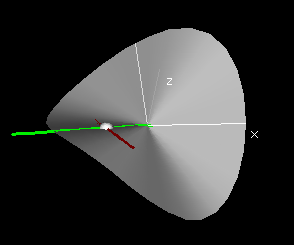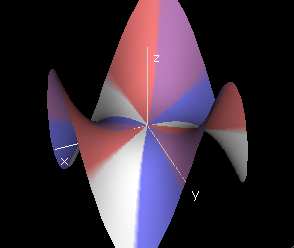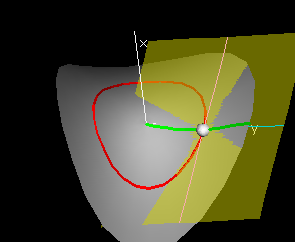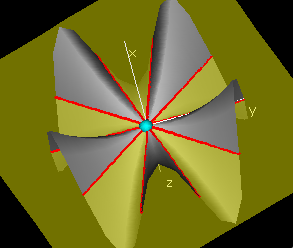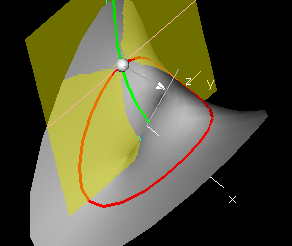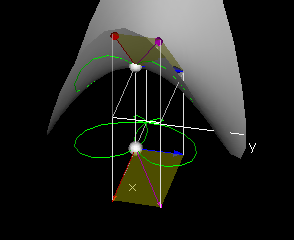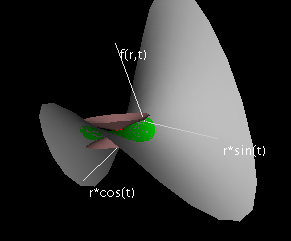At the end of Section 2, we will develop formal criteria for differentiability, and in the meantime, we will investigate properties that a tangent plane must have.
If there is a well-defined best-approximating plane, then the intersection of that plane with a vertical plane over a line in the domain will be a line which is the tangent line to the slice curve over the line. In particular, for the slice curve (r,θ0,f[r,θ0]), the tangent line will lie in the tangent plane, if such a plane exists. The slope of this tangent line is called the r-partial derivative of f at (r0,θ0).
Then the r-slope p of the linear function is called the r-derivative of f at (r0,θ0), denoted fr[r0,θ0] and the θ-slope q is called the θ-derivative of f at (r0,θ0) denoted fθ[r0,θ0].


